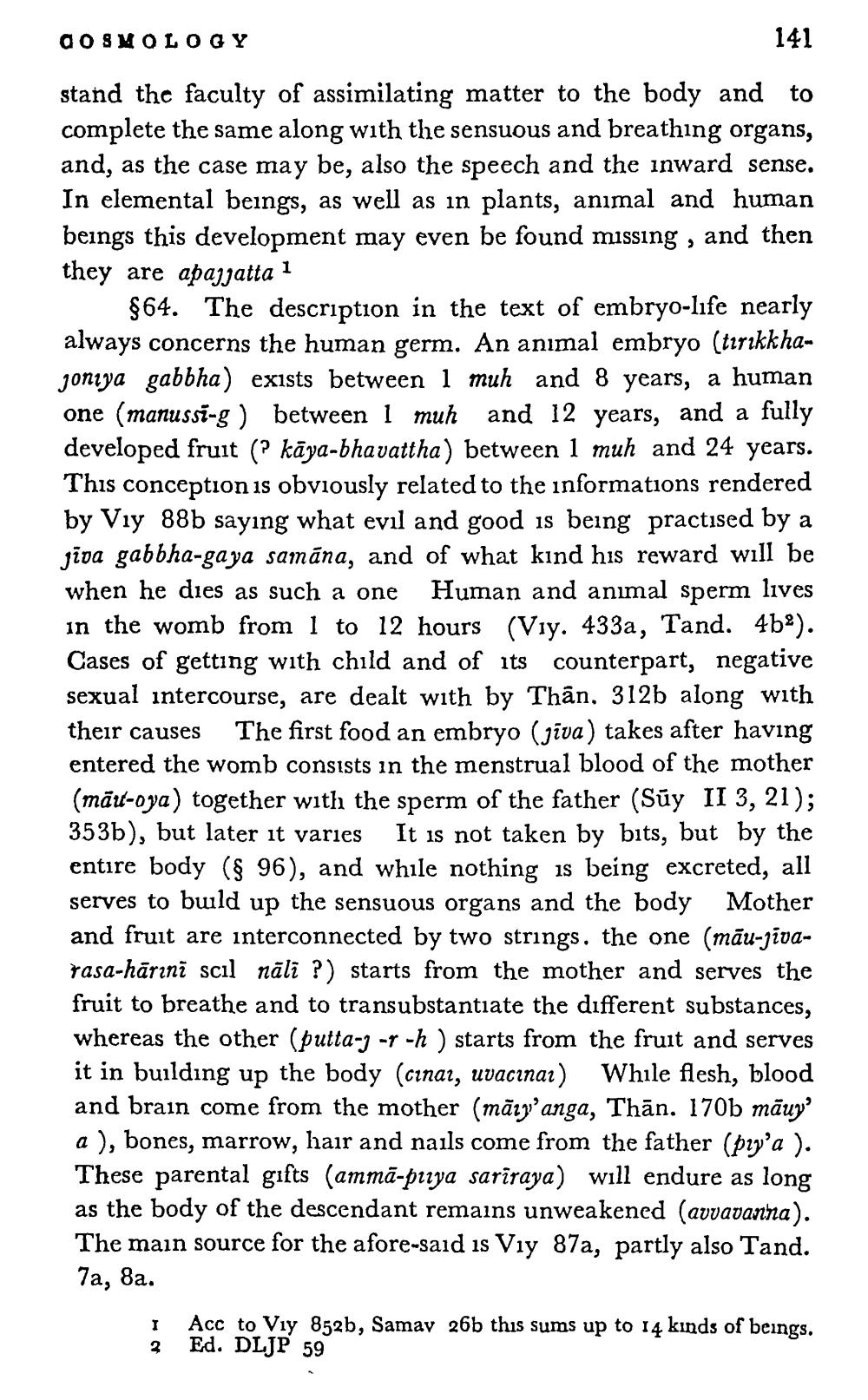________________
GOSMOLOGY
141
stand the faculty of assimilating matter to the body and to complete the same along with the sensuous and breathing organs, and, as the case may be, also the speech and the inward sense. In elemental beings, as well as in plants, animal and human beings this development may even be found missing, and then they are apajjatta
1
§64. The description in the text of embryo-life nearly always concerns the human germ. An animal embryo (tirikkhajoniya gabbha) exists between 1 muh and 8 years, a human one (manussi-g) between 1 muh and 12 years, and a fully developed fruit (? kāya-bhavattha) between 1 muh and 24 years. This conception is obviously related to the informations rendered by Viy 88b saying what evil and good is being practised by a jiva gabbha-gaya samana, and of what kind his reward will be when he dies as such a one Human and animal sperm lives in the womb from 1 to 12 hours (Viy. 433a, Tand. 4b2). Cases of getting with child and of its counterpart, negative sexual intercourse, are dealt with by Thân. 312b along with their causes The first food an embryo (jiva) takes after having entered the womb consists in the menstrual blood of the mother (mau-oya) together with the sperm of the father (Suy II 3, 21); 353b), but later it varies It is not taken by bits, but by the entire body (§ 96), and while nothing is being excreted, all serves to build up the sensuous organs and the body Mother and fruit are interconnected by two strings. the one (mau-jivarasa-hārini scil nāli ?) starts from the mother and serves the fruit to breathe and to transubstantiate the different substances, whereas the other (putta-g -r -h) starts from the fruit and serves it in building up the body (cinai, uvacınar) While flesh, blood and brain come from the mother (mary' anga, Than. 170b mãuy' a), bones, marrow, hair and nails come from the father (py'a ). These parental gifts (ammā-piya sariraya) will endure as long as the body of the descendant remains unweakened (avvavanna). The main source for the afore-said is Viy 87a, partly also Tand. 7a, 8a.
I Acc to Viy 852b, Samav 26b this sums up to 14 kinds of beings. 2 Ed. DLJP 59




